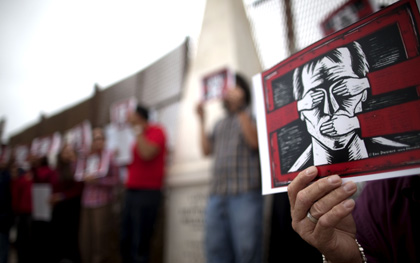The Mexican government is currently putting together a program, it says, that will help reduce one of the most brutal problems for journalists: their lack of protection from death threats from drug cartels, government officials, and ordinary criminals. Senior officials at the Ministry of Interior told CPJ that they expect to offer at-risk journalists a range of protective measures, including bodyguards, armored cars and/or stipends to relocate to other parts of the country.
But many severe problems are ahead, like the widespread lack of trust by local journalists of law enforcement officials. Twenty-two journalists have been murdered since President Felipe Calderón Hinojosa took office in December 2006, at least eight in direct reprisal for reporting on crime and corruption. It is generally assumed that government and police at all levels have been penetrated by organized crime. Journalists will thus oppose having their protection handled by people who may be working for the same groups that threatened them. Nor will journalists likely be happy receiving police protection if they believe government officials are behind the threats–as has repeatedly happened in the past.
Government officials said the program initially will rely on federal police, but in the near future, they said, they want to extend the program to the states and bring in state police. That may cause more trouble, however, because state police are usually seen as far more corrupt than their federal counterparts.
Those are problems can be worked out as the program itself is being designed, according to Omeheira López Reyna, head of the Ministry of Interior, who is responsible for the program’s operation. At this point, she said, there is a broad plan with details to be supplied over the next two months. The government has to provide Congress with something concrete on this matter very soon in order to meet a deadline for a vote on next year’s budget bill, López Reyna added. When that’s been done, she said, press support groups and journalists will be consulted about how best to implement the program.
There is considerable skepticism among Mexican press groups, which have strongly denounced the program as it stands. The groups said it is designed and run entirely by government officials who have no understanding of what it’s like to be a journalist in Mexico.
The program foresees including representatives from the National Human Rights Commission and the U.N. local offices. But these representatives will only have an advisory status, with no say in how the whole thing runs. The government is also planning to appoint three journalists with same status.
Besides criticism to the program’s design, local press groups and many reporters conceded that they too don’t know if they can trust the government to protect journalists under threat. Therefore, they told CPJ, they are not willing to lend their names to a government program designed to do so.
